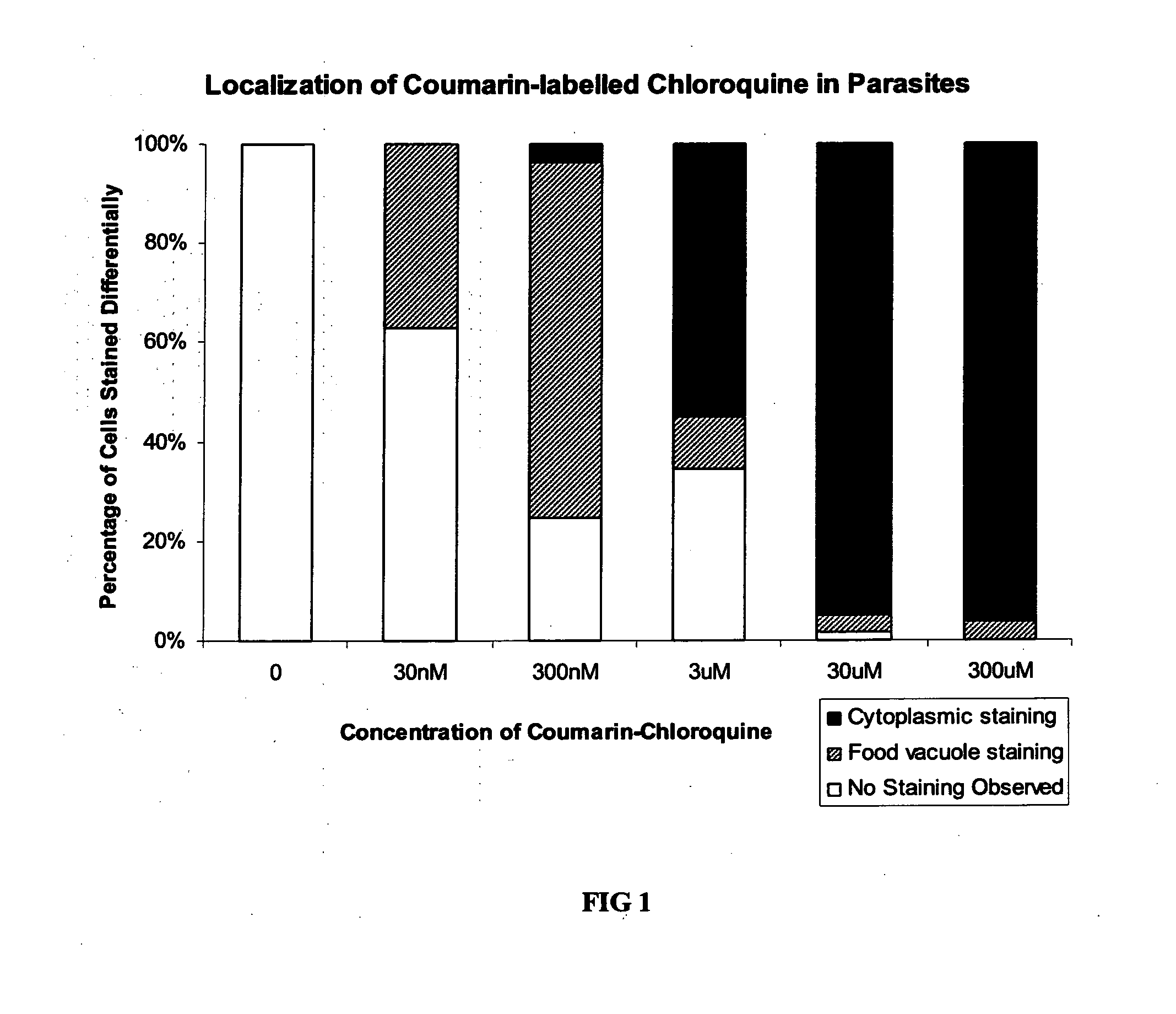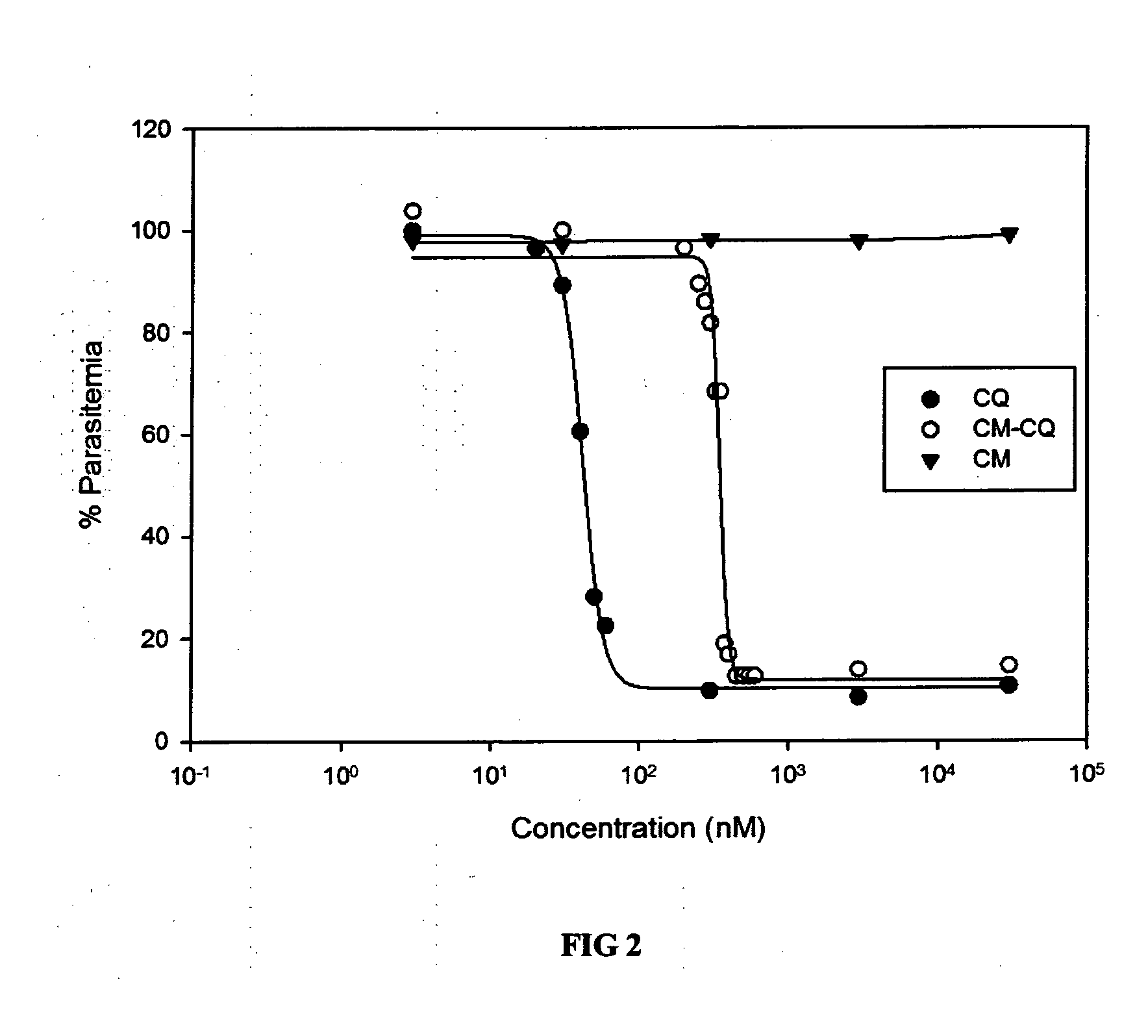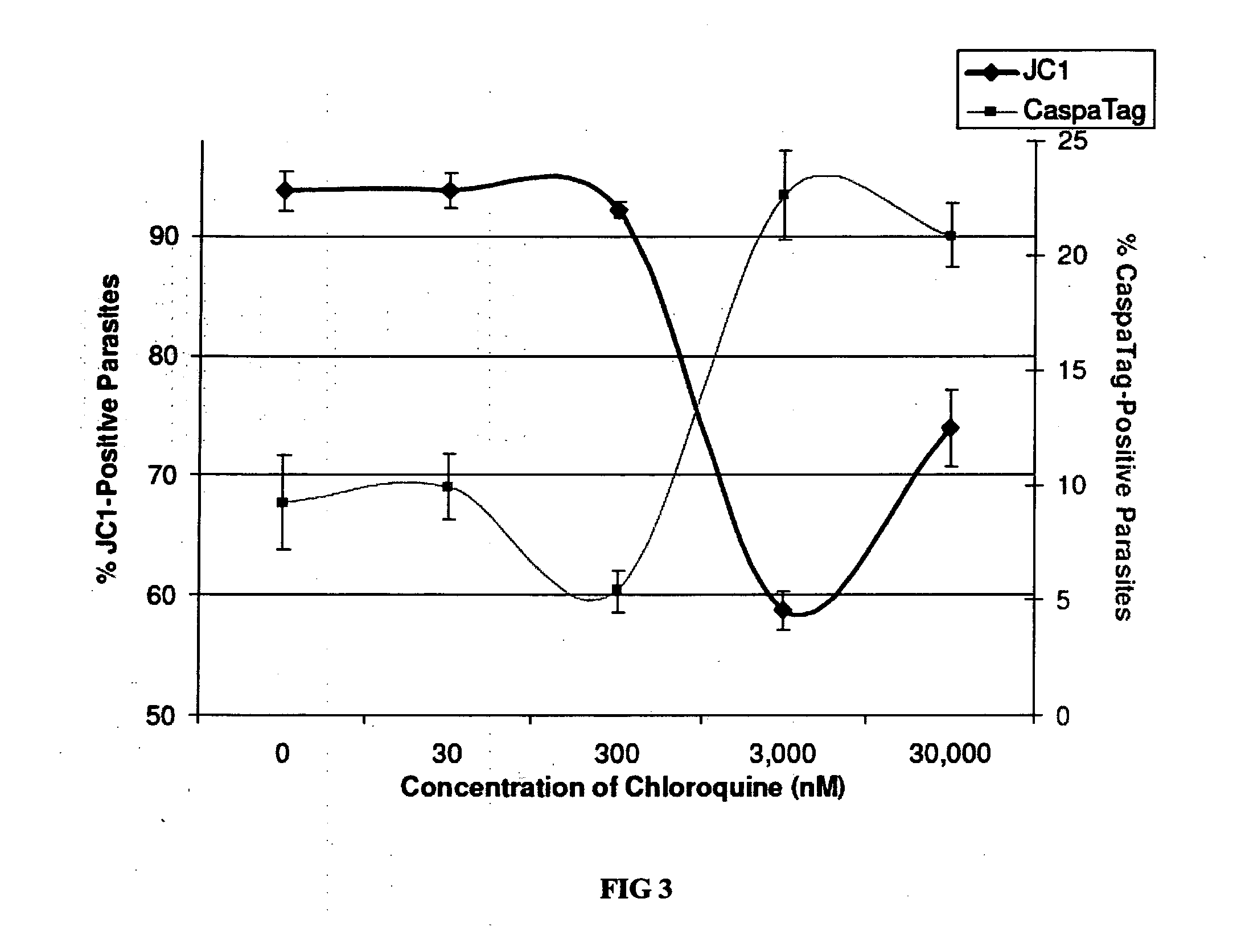Synthesis And Use Of Fluorophore-Tagged Antimalarials
a technology of fluorophore and antimalarials, which is applied in the direction of peptides, drug compositions, liquid/fluent solid measurements, etc., can solve the problems of limited armament of approved antimalarial drugs and difficult identification of new targets
- Summary
- Abstract
- Description
- Claims
- Application Information
AI Technical Summary
Benefits of technology
Problems solved by technology
Method used
Image
Examples
example 1
Synthesis of Fluorophore-tagged antimalarials
[0093]Coumarin-labeled chloroquine (CM-CQ) and Compounds 8, 13 and 16
[0094]A fluorescent-labeled CQ analog based on the blue fluorescence exhibited by a biologically-benign coumarin (CM) was designed and synthesized (See FIG. 4).
[0095]Under a standard synthetic procedure (See Prusov, E., and Maier, M. E. (2007) Tetrahedron 63, 10486-10496), using flame-dried glass apparatus under nitrogen atmosphere, des(N-ethyl)-chloroquine (25.0 mg, 0.09 mmol), i.e., N-(7-chloro-4-quinolinyl)-N′-ethyl-1,4-diaminobutane (See Natarajan, J. K., et al., (2008) J Med Chem 51, 3466-3479), was dissolved in anhydrous acetonitrile (5.0 ml). Finely powdered and pre-dried potassium carbonate (24.8 mg, 0.2 mmol) was then added, followed by the addition of an anhydrous acetonitrile solution (1.0 ml) of the coumarin α-bromoester (44.2 mg, 0.1 mmol), i.e., 2-bromo-N-(2-(2-(7-(dimethylamino)-2-oxo-2H-chromen-4-yOacetamido)ethyl)-acetamide (See Alexander, M. D., et al.,...
example 2
Use of CM-CQ in Cell Localization Studies
[0099]Confocal bioimaging assays were carried out with P. falciparum-infected red blood cells (RBCs) exposed to increasing concentration of CM-CQ. The drug accumulates in different cellular compartments depending on the concentration of CM-CQ as seen in FIG. 1.
[0100]The cellular distribution of CM-CQ in 7G8 (CQ-resistant) and K1 (CQ-resistant) will be investigated by a similar protocol. The localization pattern should differ between drug resistant and sensitive malaria isolates. Therefore, the localization of the fluorophore-tagged antimalarial could be used to distinguish between resistant and sensitive isolates.
example 3
Use of CM-CQ in β-hematin Binding Assays
[0101]β-hematin binding assays will be carried out with CM-CQ and CQ. CQ and other quinolones are known to bind to β-hematin, and the extent of binding can be quantified spectrophotometrically (See Auparakkitanon et al. Antimicrobial Agents and Chemotherapy 2003 47:3708-3712). Exposure of β-hematin to CM-CQ is hypothesized to result in comparable binding coefficients when compared to CQ-hematin interaction.
PUM
| Property | Measurement | Unit |
|---|---|---|
| Fluorescence | aaaaa | aaaaa |
| Affinity | aaaaa | aaaaa |
Abstract
Description
Claims
Application Information
 Login to View More
Login to View More - R&D
- Intellectual Property
- Life Sciences
- Materials
- Tech Scout
- Unparalleled Data Quality
- Higher Quality Content
- 60% Fewer Hallucinations
Browse by: Latest US Patents, China's latest patents, Technical Efficacy Thesaurus, Application Domain, Technology Topic, Popular Technical Reports.
© 2025 PatSnap. All rights reserved.Legal|Privacy policy|Modern Slavery Act Transparency Statement|Sitemap|About US| Contact US: help@patsnap.com



